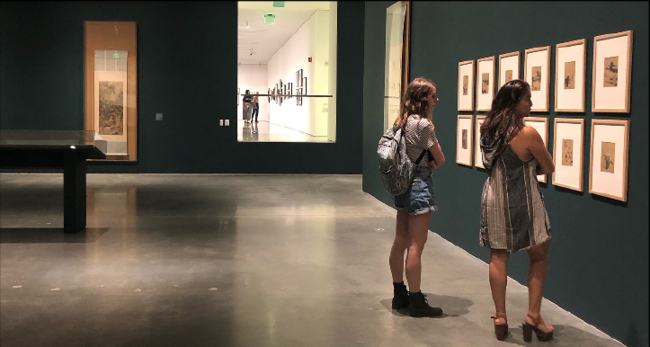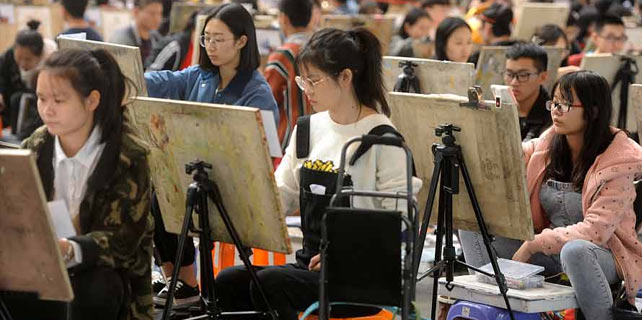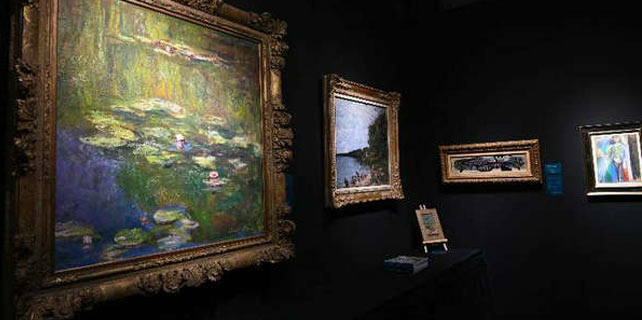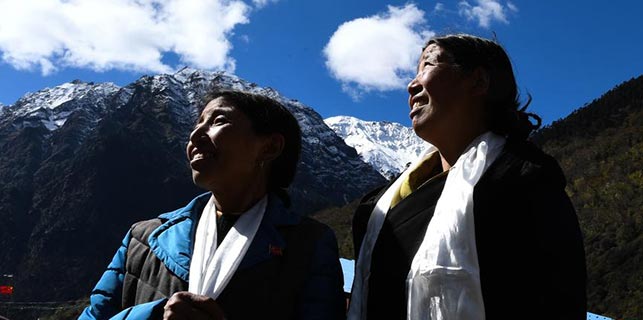Top Ming master's works come to UC Berkeley
 |
|
Visitors study works by Chen Hongshou, the most important Chinese artist of the 17th century, at the UC Berkeley Art Museum and Pacific Film Archive, where an exhibition of his work is on view through Jan 28, 2018. LIA ZHU / CHINA DAILY |
An exhibition of one of China's most influential artists from more than 400 years ago is expected to speak to contemporary American audiences through a distinct style and a little bit of irony.
The exhibition, Repentant Monk: Illusion and Disillusion in the Art of Chen Hongshou, is on view through Jan 28, 2018 at the UC Berkeley Art Museum and Pacific Film Archive (BAMPFA).
It's a rare occurrence to focus a show solely on Chen (1599-1652), the finest artist of 17th century China. It's also the artist's first exhibit in North America, according to curator Julia White.
"We had to dive deep into the artist's work to understand how he started as a painter, what happened during his lifetime and how that affected his work," said White, senior curator for Asian art at BAMPFA.
It took White three and a half years to organize the show, trying to find the most representative works and the highest quality.
Twenty-five rarely exhibited works, including figures, landscapes, bird-and-flower paintings and calligraphy, are on display, drawn from the museum's own collection as well as private collections and other museums in the US, Switzerland and China.
Three pieces on loan from the Shanghai Museum have never been exhibited in the US before, said White.
Chen lived a short time during the turbulent times when China was in transition from the Ming to the Qing Dynasty. His work reflects the tumult of the age.
"The fact that there were so many attempts to copy his work indicates how popular he was," said White. "Had he lived longer, we would have seen even more wonderful work by his hand, but unfortunately his life was cut short."
In an attempt to escape the invading armies and bandits descending on his homeland, Chen briefly became a Buddhist at the fall of the Ming and adopted the nickname of the "Repentant Monk".
During the early Qing Dynasty, his work took on melancholic strains that reflected the uncertainties of the time.
As a trained scholar unable to secure an official position through the traditional means of a court appointment, Chen turned to a life marked by disillusionment and embraced a libertine lifestyle that is reflected in many of his works, said White.
His landscape paintings demonstrate his vast knowledge of past traditions, while his bird-and-flower paintings display a freshness that appeals to modern viewers.
White said American audiences will be drawn to the paintings without necessarily having prior knowledge of Chinese painting but just by seeing the way the artist depicts historical figures in imaginary landscapes.
"Part of our mission is to introduce artists like Chen Hongshou, the finest artist of the Ming Dynasty, to the American public, making them familiar with what kind of work was done in China during that time," she said.
The poetic inscriptions in his works are interpreted in audio guides, which visitors can download from the museum's website.
liazhu@chinadailyusa.com
















